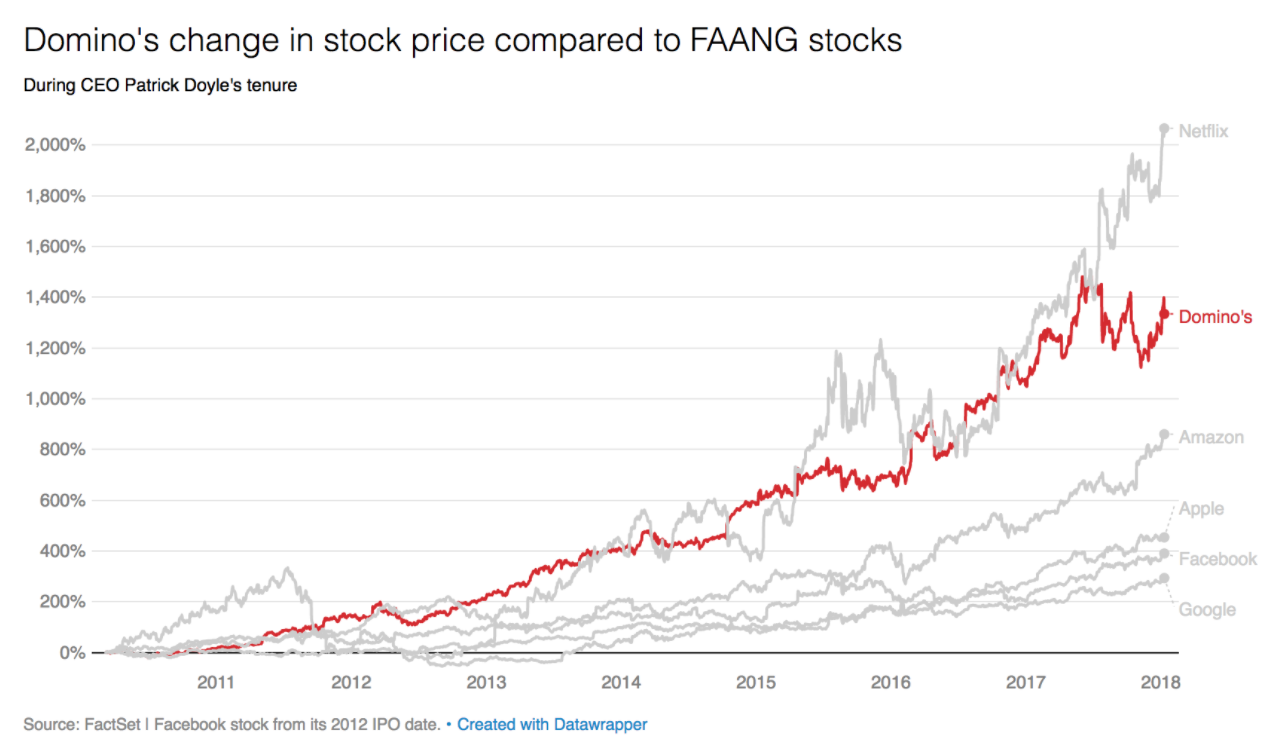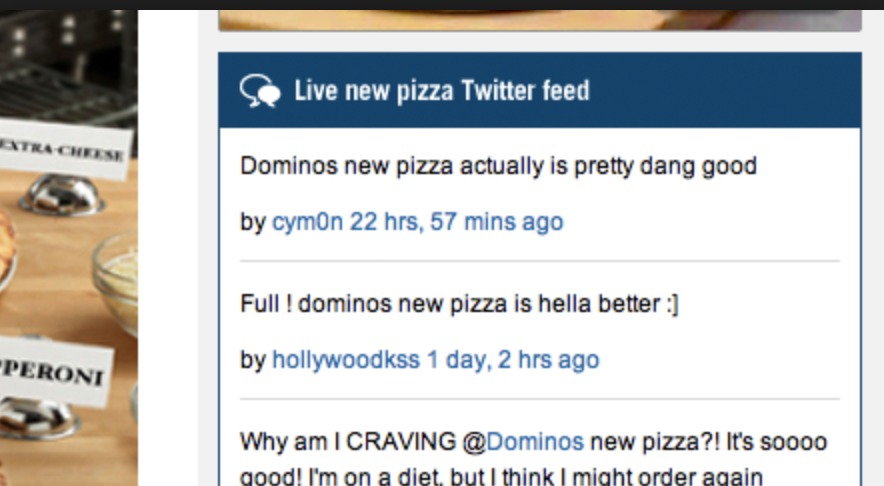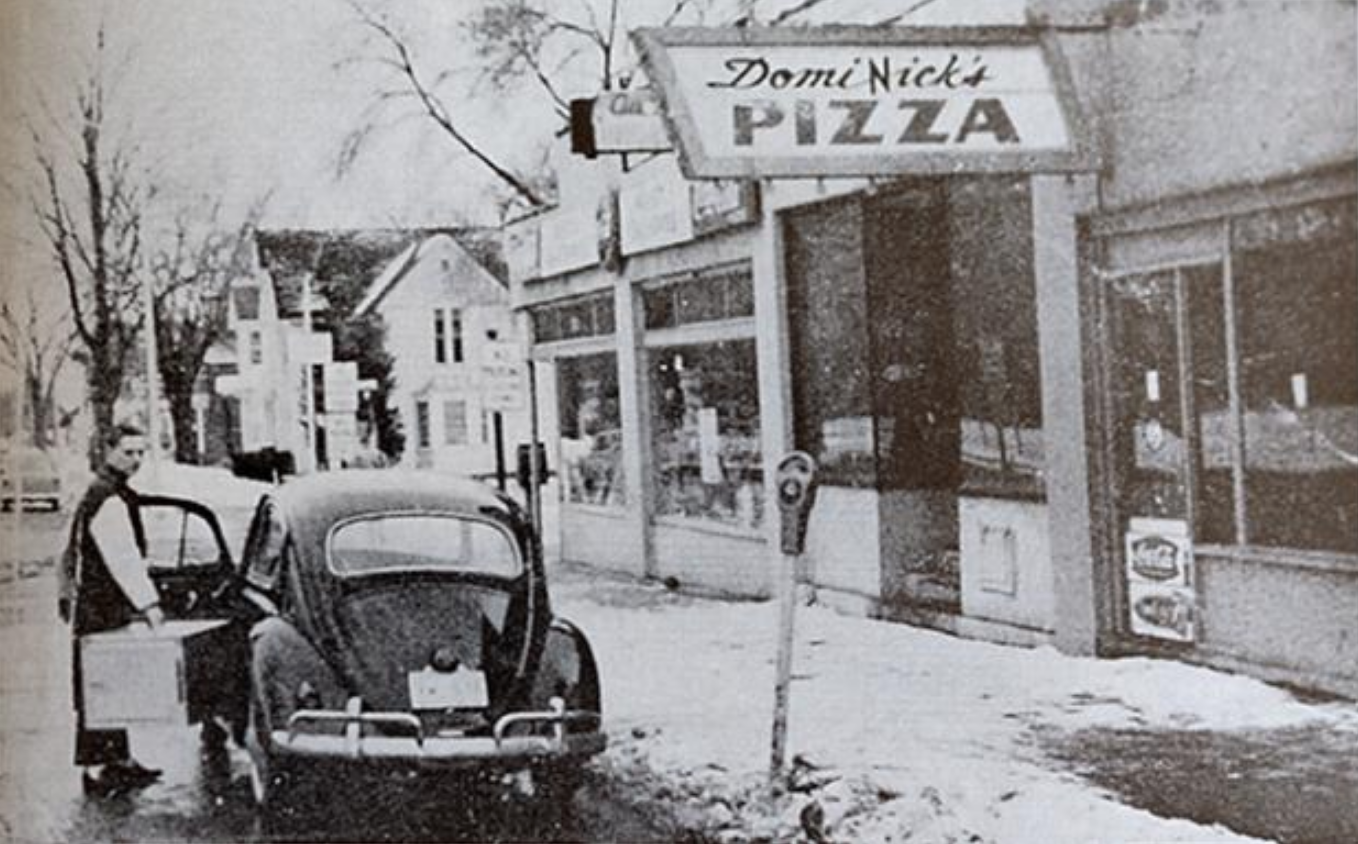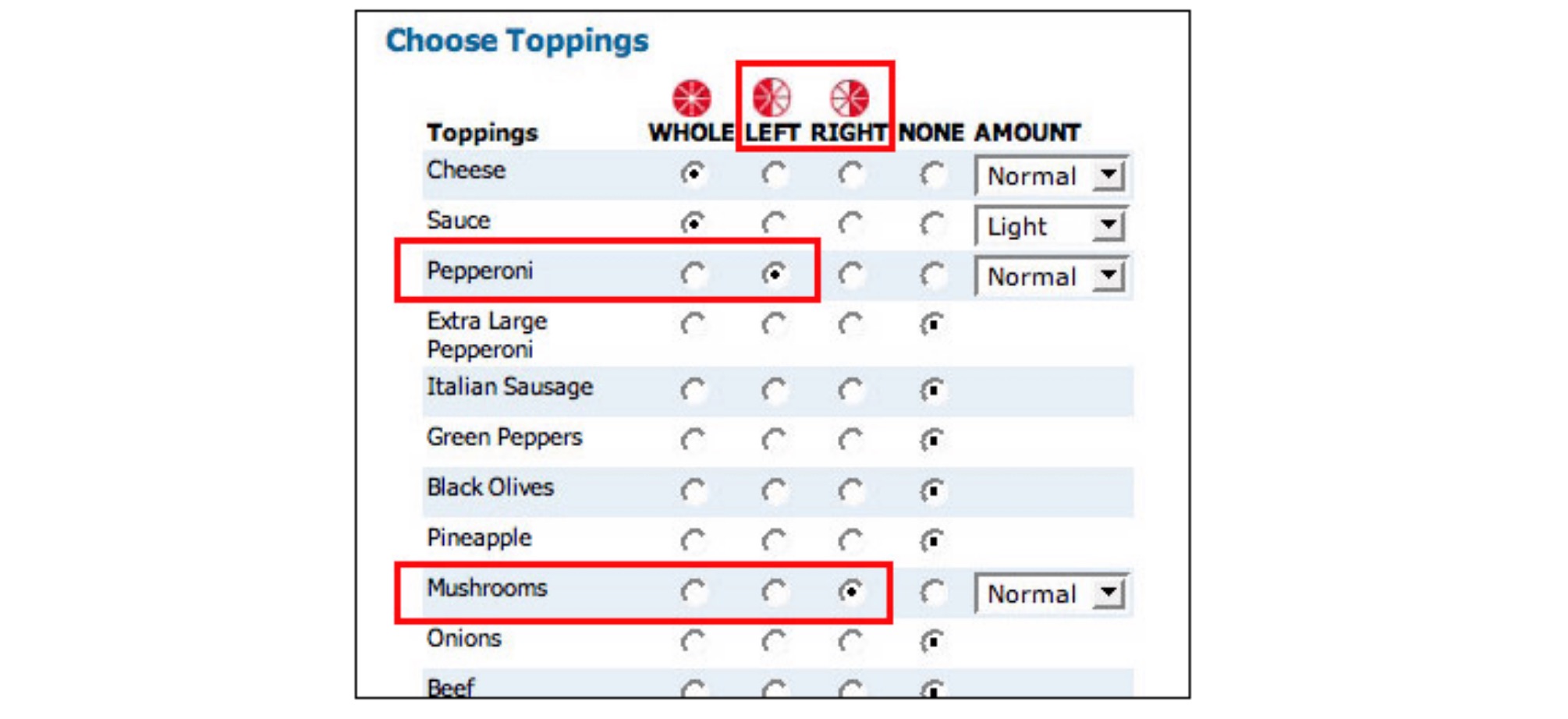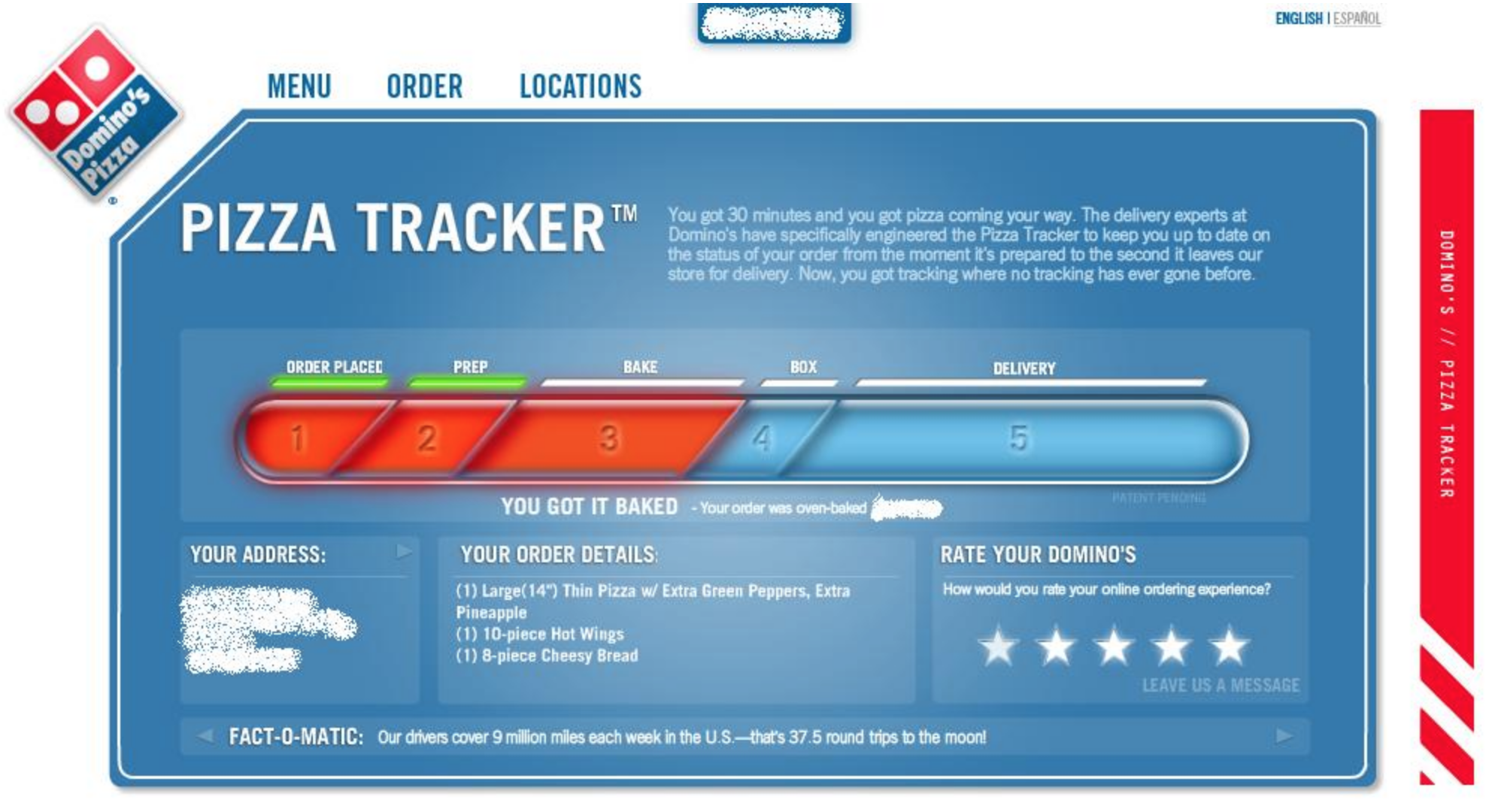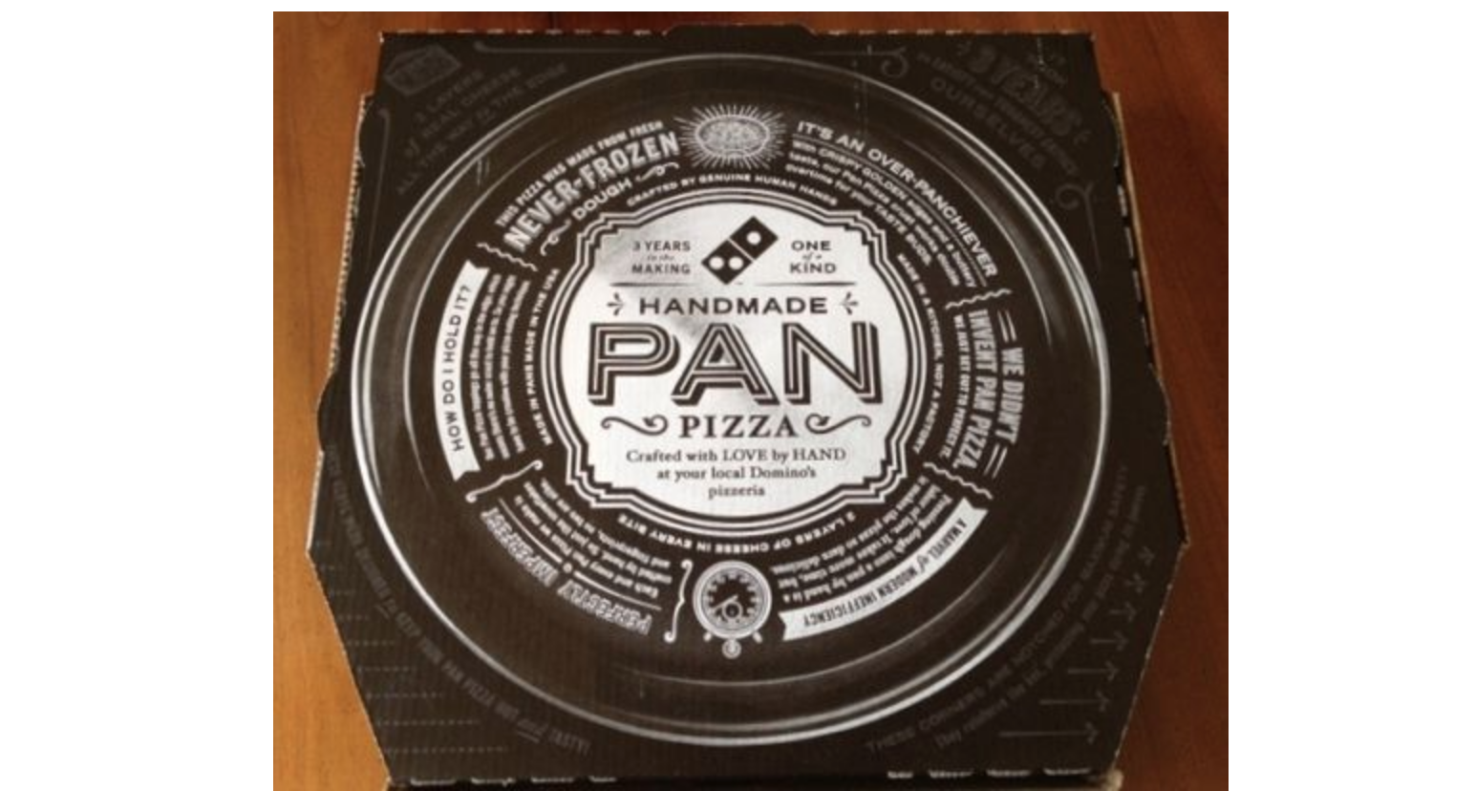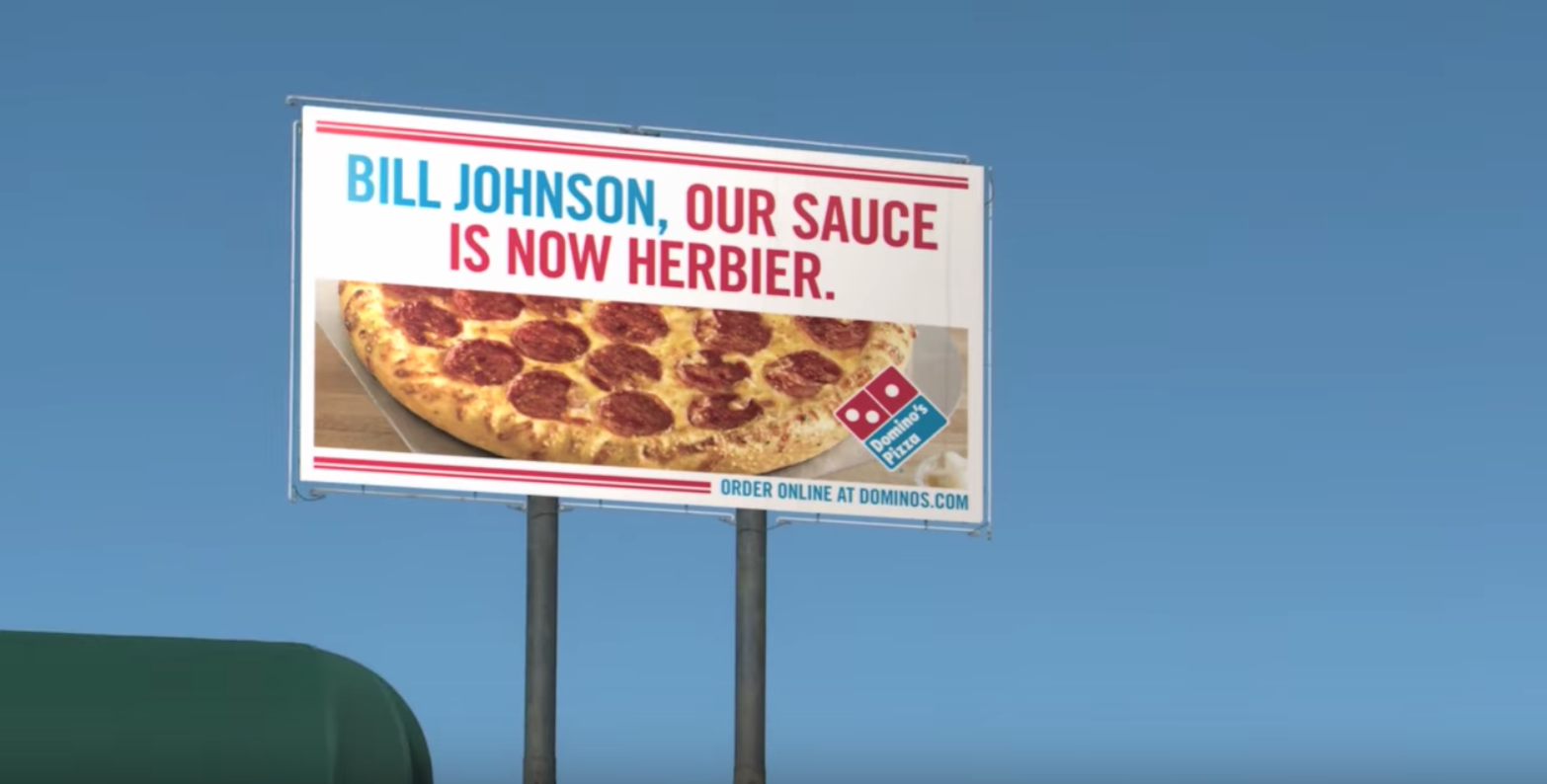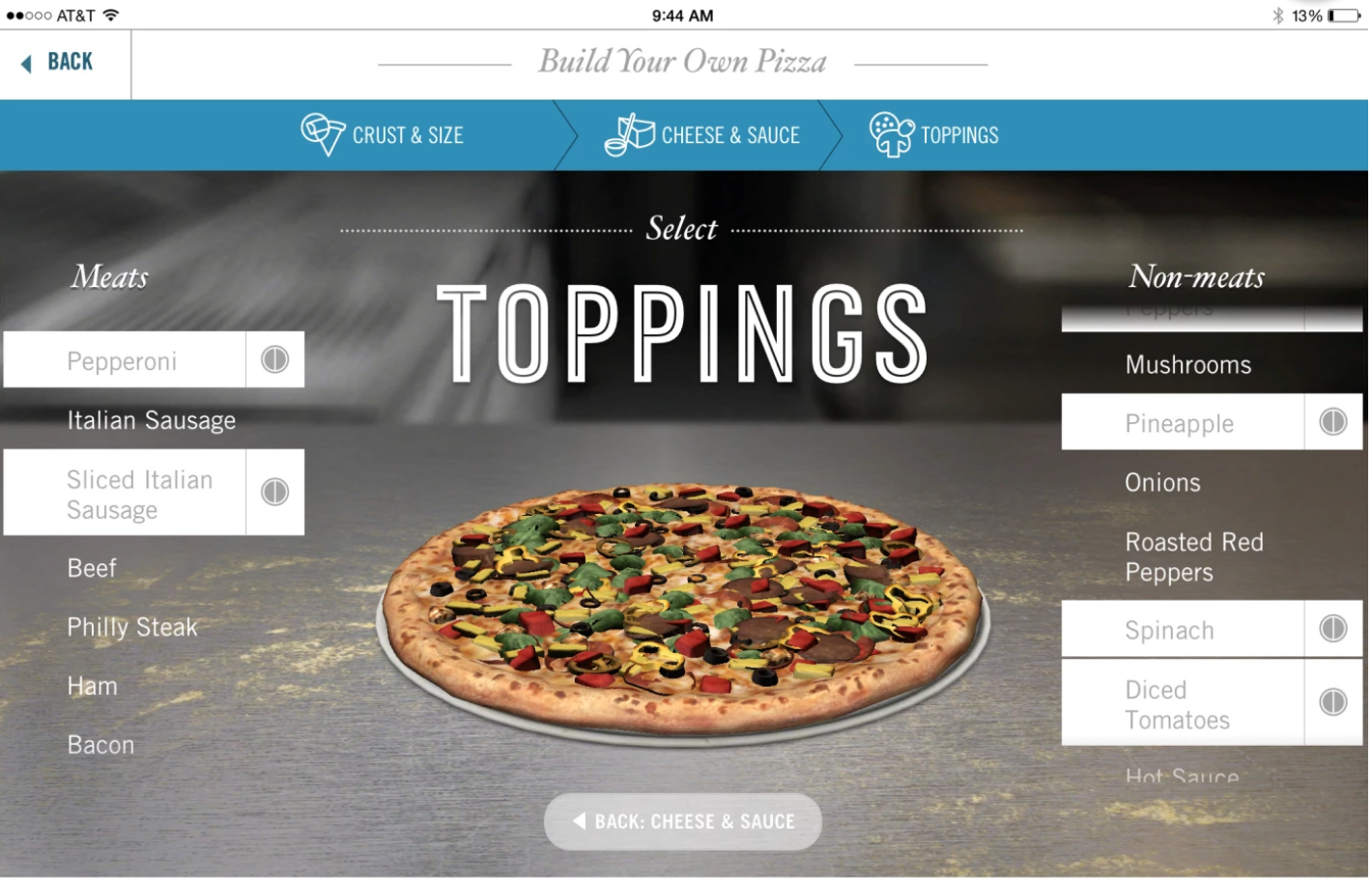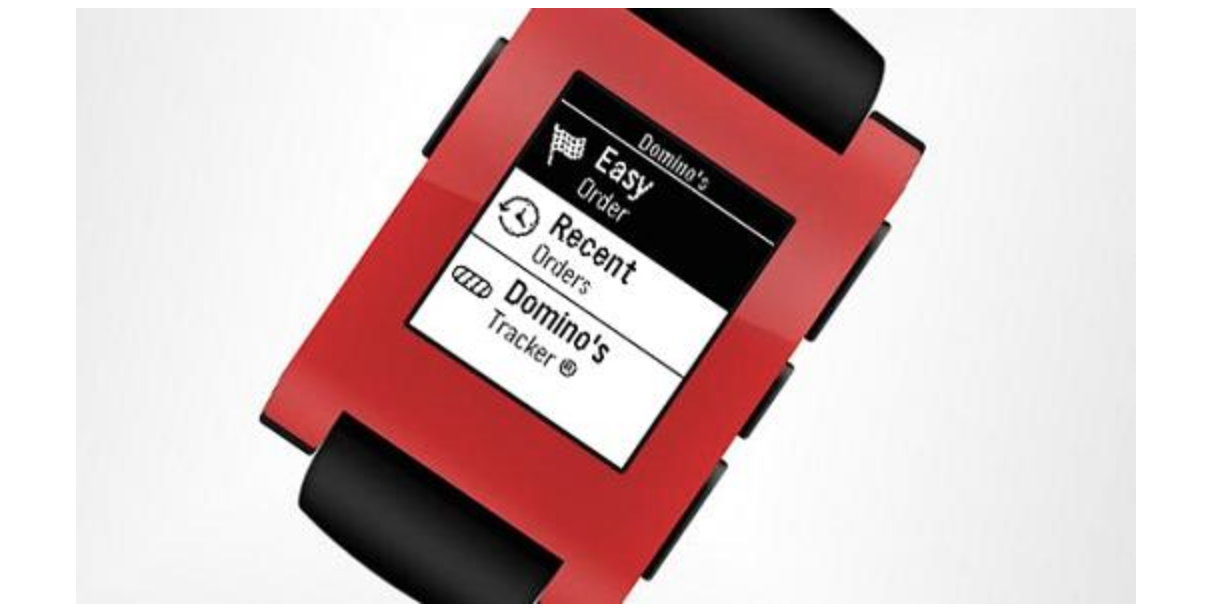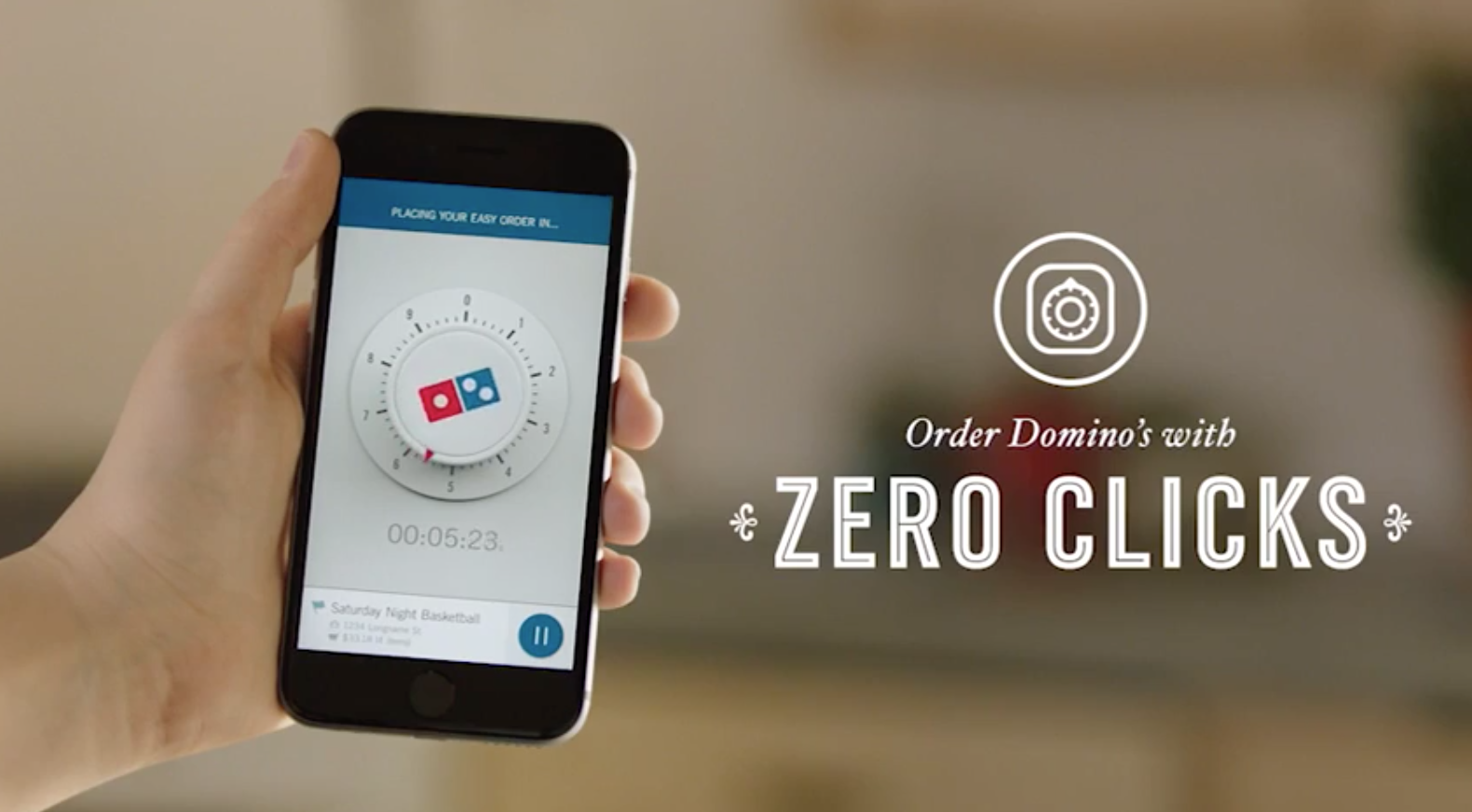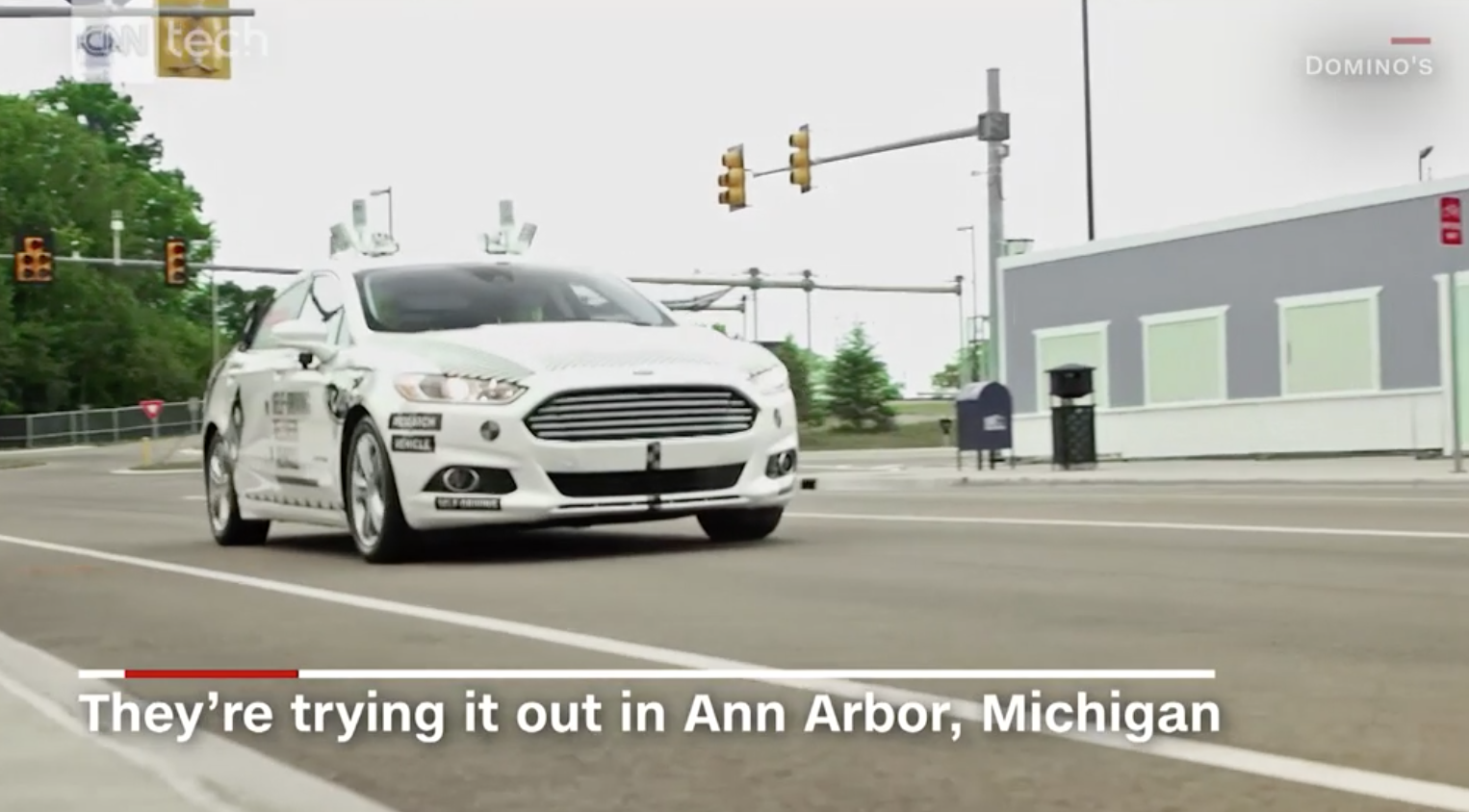How Domino’s Pizza Drove a 90x Increase in Stock Value by Acting Like a Tech Startup
Startups can learn some of the most valuable lessons on product and marketing from the growth of the world’s biggest pizza chain.
The story of Domino’s Pizza is a hero’s journey. It’s a story of reinvention. Domino’s had a 180-degree company overhaul and turned critics into superfans by being honest with themselves about their weaknesses. They took a huge, scary risk and completely scrapped and remade their core product: pizza.
At the same time, the company has been perceptive about where their true value is for customers. They know customers love them because they’re convenient—and in recent years they’ve used technology to double down on the convenience and reliability that define the core of their brand.
This self-awareness, and the guts to act on it, has paid off. Now they’re punching far above their weight class. Domino’s stock has grown 90x from $2 to $180 since 2010. These growth rates dwarf those of Facebook, Google, Amazon, and Apple.
They’re also seeing a ton of engagement and feedback on social media from customers-turned-brand-advocates. Domino’s Pizza went from being an underperforming company in a very traditional industry with a bad core product to an inspiring, once-in-an-industry example of flawless brand awareness, product development, and marketing.The kicker is that they pulled it off by thinking like a startup. Let’s take a closer look at how:
- Domino’s Pizza grew their company and brand in the early days and cemented their reputation for fast, cheap, convenient pizza delivery.
- Domino’s listened to—and acted on—customer feedback and completely recreated their pizza recipe in response to criticism about the terrible taste.
- Domino’s continued to reimagine ways to order pizza and is using all of the technology available to them to double down on convenience in ordering and delivery.
Go ahead and order a pizza while you read on—it will be there soon.
1960-2007: Convenience as a brand
Fifty years before Apple released its brand-defining iPhone, forty years before Salesforce brought software to the cloud, and thirty years before Tim Berners-Lee invented the World Wide Web, two brothers started a pizza company that would become an innovator in business and technology and one of the most loved brands in America.
The winding hero’s journey from growing franchise to public embarrassment to—finally—the stock-picker favorite began with some of the same best practices that we use in business today. Domino’s built a strong foundation for longevity because they understood their own core value and knew what their market wanted.
Now, almost sixty years later, they’re still growing at a crazy pace. Their pace of innovation is putting other food brands, and even tech companies, to shame.
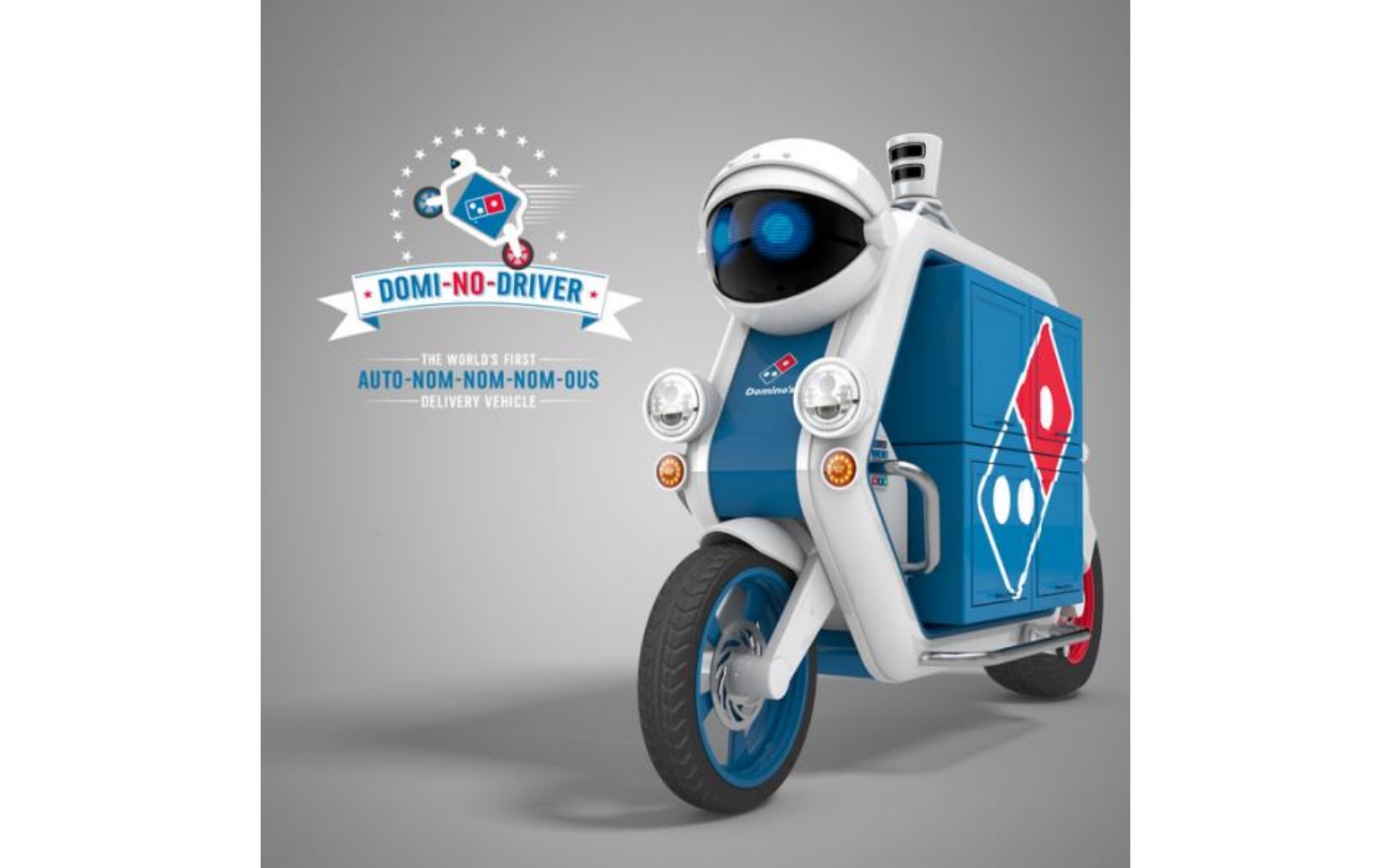
In 2017, Domino’s began testing self-driving delivery vehicles. [Source]
When Tom and Jim Monaghan took over an old pizza parlor in 1960 and started growing their own pizza business, they hit the top moves from the basic business playbook. Tom and Jim did a ton of research about the pizza industry and the competitors. They thought carefully about operations behind the scenes as they franchised and scaled. They entered into the market with one product, pizza, and began to expand out into a pizza ecosystem by adding new products like Cheesy Bread and Cinna Stix.
But most importantly, they were very self-aware and would craft their brand and messaging around the things they knew were most important to their market. The founding team understood that Domino’s was not just a pizza company—it was also a pizza delivery company. Convenience and reliability are always going to be important to people who are ordering pizza, and these are the core values that Domino’s recognized quickly and doubled down on in their early messaging and brand marketing.

With these solid practices in place, the growth of the Domino’s Pizza empire was fast and furious. Here’s how these early years unfolded and how Domino’s spent its first 50 years establishing convenience as a brand.
1960: After working years of odd jobs and trying to save money for college, 23-year-old Tom Monaghan moved back to his hometown of Ann Arbor, Michigan with his brother Jim. The two heard that a local pizza business, DomiNick’s, was up for sale. Tom took out a $900 loan from the Post Office credit union and bought the shop in Ypsilanti, Michigan. Neither had a background in business or the pizza industry, but the brothers were excited to try their hand at running and expanding the local business. A few months after opening, Jim wanted out and traded his half of the business, leaving Tom as the only owner.
In the very first few years, Tom made some smart business decisions that allowed the business to grow strong even while it was small. For example, he emphasized delivery quickly because the store itself didn’t have much seating. In another smart move, he cut back additional items he’d started adding to the menu, because he realized that focusing on pizza was operationally more manageable and turned better volume and revenue. Profits grew from $99 a week to $750 a week.1965-1967: Tom Monaghan’s pizza business operated under the name DomiNick’s for several years. But the original owner wanted to maintain the rights to the name, so Monaghan chose “Domino’s Pizza” instead, put an ad for it in the Yellow Pages, and incorporated in 1965. Then he started franchising. This was pretty uncommon then, but Monaghan was determined to expand. The terms for the franchise (where Domino’s would keep 2.5 percent as royalties from sales, 2 percent to cover advertising, and 1 percent for bookkeeping) were definitely tailored to motivate franchising and expansion rather than optimizing profits. Monaghan said later in his autobiography, “By today’s standards, the royalties were far too favorable to the franchisee. But it served our purpose then, and I was not concerned about covering all future contingencies.”
1973: Fast delivery and great service had always been a priority for Monaghan. He spent the first ten years of his pizza business trying to streamline and improve delivery, cutting ingredients out of the pizza recipe for faster cook time and designing corrugated boxes that would keep pizza hot during delivery. But one of the biggest improvements on delivery time came from franchising. Now the company was franchising so quickly that they opened a College of Pizzarology to train people who wanted to open a franchised store. This was brilliant for the company’s growth because it ensured that branding and operations remained consistent.
By spreading out to more areas, Domino’s Pizza could be more confident that a store would be close to a customer’s home. This inspired Domino’s first delivery guarantee: “a half hour or a half dollar off.” This slogan gained a lot of press attention and helped customers start to associate the brand with fast and convenient delivery.1978: Domino’s continued to drive growth beyond just franchising—in the late 1970s, they also led several mergers with other regional pizza companies. This allowed them to gain territory in more geographical areas very quickly. For example, they acquired Pizza Co, Inc. and gained 23 new stores in Kansas, Arizona, and Nebraska.
1979: Domino’s continued the rapid acquisition and expansion and merged with Mueller’s Ohio Pizza Enterprises, Inc. and added 50 stores in Ohio and Texas. At this point they’d grown to 287 stores internationally and announced plans to expand internationally. Because they were growing so quickly, they had to take some big operational measures to keep things like quality assurance, training, brand, and finances in check. For example, Monaghan hired Doug Dawson as a VP of marketing and corporate treasurer, and John McDevitt as a financial consultant. They helped him create new accounting methods and systems for loaning money to franchisees. To keep operations under control, Monaghan also divided the business nationwide into regions with regional managers. Monaghan said the decision “gave us the long communication lines with tight controls at the working ends that we needed for rapid but well-orchestrated growth.”
The same year, Domino’s also began their “30 minutes or it’s free” delivery guarantee. This was another huge move to cement their niche in the increasingly competitive pizza market. They wanted to win customers’ hearts and carve out a space in their brain with the guarantee of fast delivery. The marketing strategy was hugely effective for winning customers because the guarantee of speedy delivery or free pizza was a win-win. On the other hand, it didn’t have as positive of an effect on the brand as they would have expected. Even though customers did come to associate Domino’s with fast delivery, they also gained a reputation for recklessness and disregard for public safety because the policy encouraged delivery drivers to speed.
1985: Advertising Age wrote that Domino’s was “among the fastest-growing money makers in the restaurant industry.” Just a few years earlier they’d opened their first non-U.S. store in Winnipeg, Canada, and began international expansion. To stay competitive, they needed to be growing this quickly—at this time, Domino’s faced competition from Pizza Hut, who had 4,000 units while Domino’s had 2,300. In response, they raised their advertising spend 249% from the previous year. They introduced a new advertising campaign to emphasize convenience and ease: “One Call Does It All.” Just two years later, they’d grown total systemwide sales to $1.44 billion and had 3,605 units.
1993: After over 20 deaths involving Domino’s drivers, Domino’s ended their “30 minutes or it’s free” delivery guarantee. Monaghan’s official statement on the end of the policy: “With our success in home delivery has come a negative public perception that we are not committed to safety.” Convenience and delivery remained central to the company’s brand, but the specific delivery guarantee was dropped.
1999: Monaghan retired as chairman and CEO David A. Brandon took over. Monaghan had created a strong foundation for the business, but Brandon was primed to continue expanding with an eye on the bottom line. He was known to ruthlessly shut down underperforming stores, but also aggressively added new franchises. Within two years, Brandon had added 758 new stores. Domino’s also opened their 2,000th overseas location. Brandon was a marketing pro and under his leadership, Domino’s began to add new products after nearly 40 years of serving just one kind of pizza.
2001: As part of Brandon’s drive to expand and add additional revenue streams, Domino’s added two new products: Cheesy Bread and Cinna Stix. Competition in pizza delivery was still intense, and offering additional food items gave Domino another way to gain an edge. Customers definitely appreciated the additions. That year, systemwide sales grew 6.8 percent over the previous year, reaching $3.78 billion.
2003: Domino’s kept building out the menu and their pizza ecosystem with the Domino’s Dots dessert and Philly Cheese Steak Pizza. The Philly Cheese Steak Pizza was a pointed effort to connect with another American comfort food. The then-VP of Marketing, Ken Calwell, said, “It is the perfect all-American complement to the Domino’s Pizza menu.”
2004: At the beginning of 2004, Domino’s was $943.2 million in debt. They decided to hold an IPO after over 40 years as a private company and planned to use the money to help pay off some of the debt. It was odd timing for a legacy company in a competitive industry, and the trading prices reflected that—-their IPO raised $337.4 million on 24.1 million shares, which was lower than the expected price range. S&P commented on the company’s “weak cash flow protection measures.” The saving grace, according to S&P, was the company’s established brand and cost-efficient operating system.
2007: By 2007, Domino’s was making around $2.2 billion in revenue in the United States alone, and $5.4 billion in revenue worldwide. But competition was stiff—Domino’s and Pizza Hut continued to butt heads as they competed for greater market share around the world. To stay one step ahead, Domino’s introduced online ordering and, a few months later, mobile ordering. This was huge because Domino’s was the first company in the pizza delivery industry to offer mobile ordering, which quite literally changed the way people thought about food ordering and delivery. People could do it from devices they were already using and didn’t even have to talk to another person to place the order.
Now, online and mobile ordering is our default. But Domino’s was the first company in the industry to introduce the idea of ordering from your cell phone without having to make a call. And they quickly took it even further. They gamified the ordering process with new features like a virtual Pizza Builder that brought pizza toppings to life on users’ screens. They also added another layer of convenience with their Pizza Tracker. Now, for the first time ever, users could follow the progress of their food from when they pressed the order button to when the food arrived at their door. This made the process of ordering food so much more transparent and convenient that companies like Seamless, Postmates, and since caught on and copied it. As Domino’s entered the digital age, they quickly positioned themselves as a leader. But they were only able to do this because they’d built up such a strong foundation in their first 50 years. They had a strong operations system as the backbone of their organization and they kept a close eye on the bottom line to maintain good business fundamentals. They’d also established a strong brand of convenience and reliability with their delivery guarantees and marketing campaigns.But in spite of their fast growth and leadership in their industry, Domino’s still had one huge thing holding them back: their pizza.
2007-2012: The “crust-up” reinvention of crappy pizza
“Failure shows you how to do something right” – Tom Monaghan
The most impressive part about Domino’s growth from 1960 to the early 2000s is that they became one of the biggest pizza delivery chains in the world with some of the worst pizza in the world.
Domino’s had mastered delivering pizza quickly and conveniently, and even let you track the pizza all the way to your door. The only problem was that when it got there, people didn’t want to eat it. As a business, they were innovative and resourceful. But their core product was terrible—and everyone knew it.
Customers constantly complained about the taste of the pizza. Many compared it to cardboard.
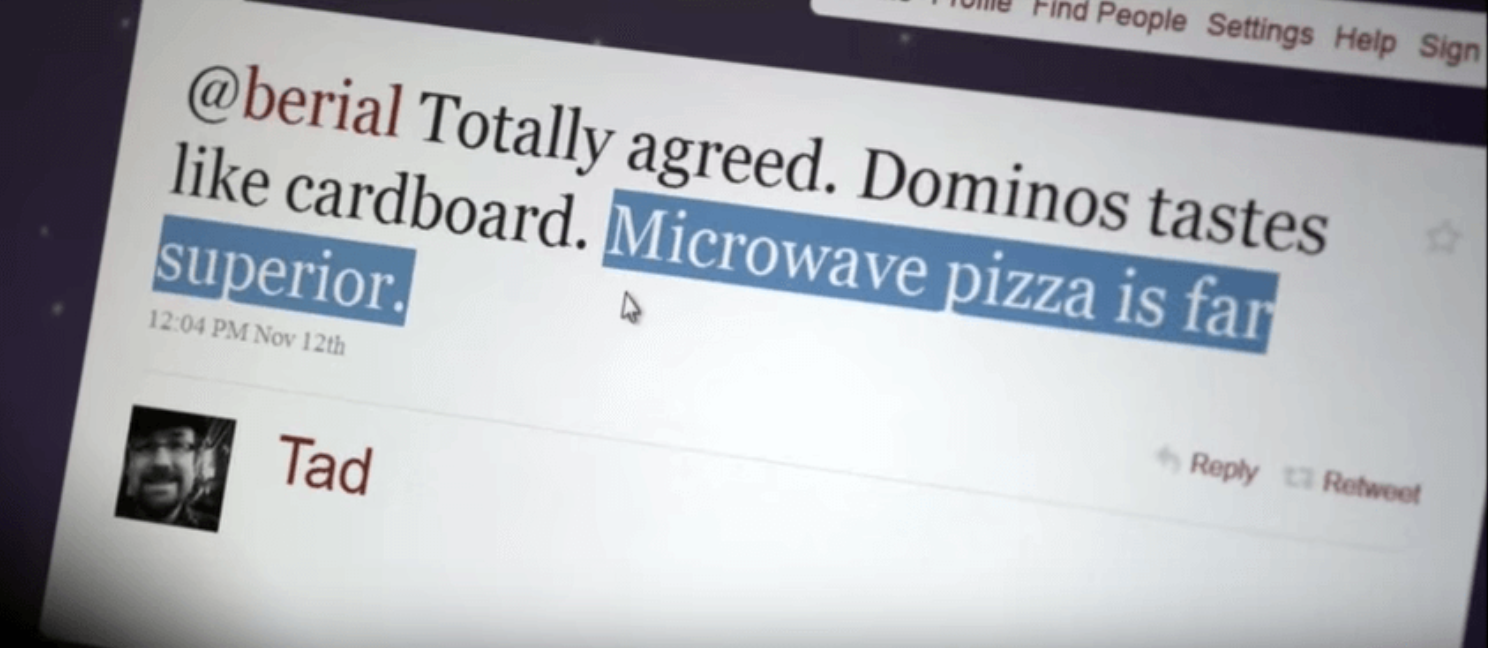
Great marketing and convenience would only last so long. Domino’s would eventually crumble if people didn’t like their core product. As complaints got louder, this became more obvious. Domino’s ran consumer tests and discovered that people actually liked pizza less if they knew it was Domino’s than if they thought it was a random unbranded pizza.
“We had somehow created a situation where people liked our pizza less if they knew it was from us. So yeah, that was a problem.” – Patrick Doyle, CEO 2009-Present
Then Domino’s made one of their best business moves in history. They decided to respond to the droves of bad feedback by completely reinventing their pizza recipe.
It was hugely risky: a pizza company was admitting they had terrible pizza. Then they tried to improve it in the full glare of the public eye. Everyone at the company was nervous, but most thought it was a great idea. And without taking this risk and creating a product that people actually loved, they would have never pivoted into the innovative, tech-first superbrand they are today.
It all started with the hardest part: acknowledging a weakness.
2008: Domino’s continued to innovate and become more convenient and transparent with new features like the Pizza Tracker and Pizza Builder. But they were focusing on the wrong things. They improved everything except the thing that needed it most: the pizza.
This is a company that had built the whole brand around fast and reliable delivery, and Marketing 101 says you focus on your point of differentiation. We kept talking about delivery and 30 minutes or less, and it just stopped working. We realized that everyone in the world who wanted fast convenient pizza was already buying from us, and the people who wanted a great pie simply were not.” – Patrick Doyle
Shares were at a record low of $2.83 and customers took to social media to comment that Domino’s food was the “worst excuse for pizza [they’d] ever had,” was “totally devoid of flavor,” and even that “the sauce [tasted] like ketchup.”
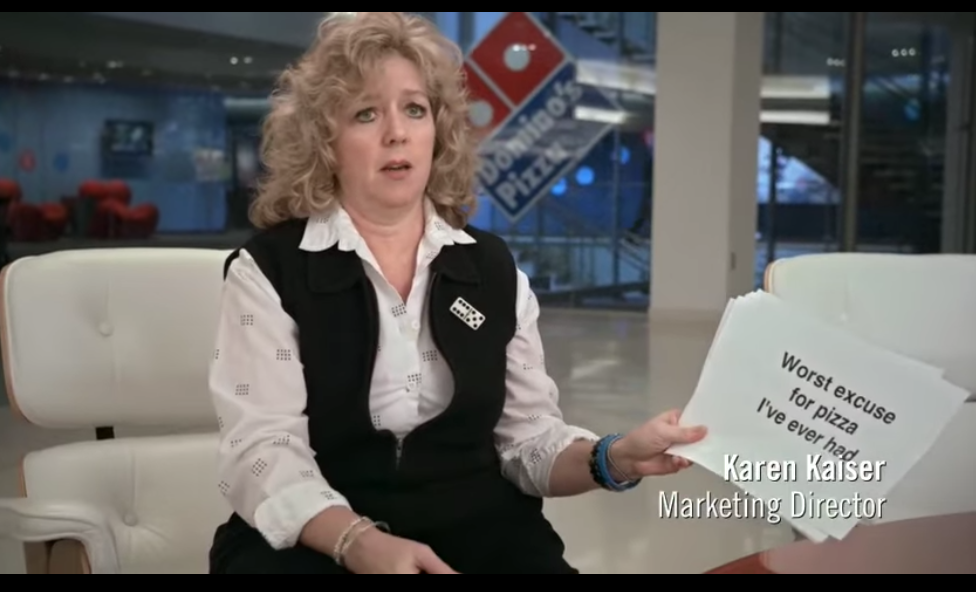
In video as part of a later campaign about their transformation, Marketing Director Karen Kaiser reads reviews of Domino’s Pizza from customers. [Source]
2009-2010: Domino’s used their terrible reviews as motivation to completely reinvent their pizza. The huge pivot coincided with Patrick Doyle joining as CEO in 2010. This was hugely important because he spearheaded the transformation and pushed to create pizza that customers would love. That required radical action. The top chefs at Domino’s began to overhaul the entire recipe by going back to the drawing board and redesigning different elements like the crust, the sauce, and the cheese. Chefs tested over ten types of crusts, fifteen types of sauces, and dozens of cheese. They mixed and matched different combinations to understand what flavors worked best together. In the end, they ended up with a completely new crust, sauce, and cheese recipes. The entire pizza was new.
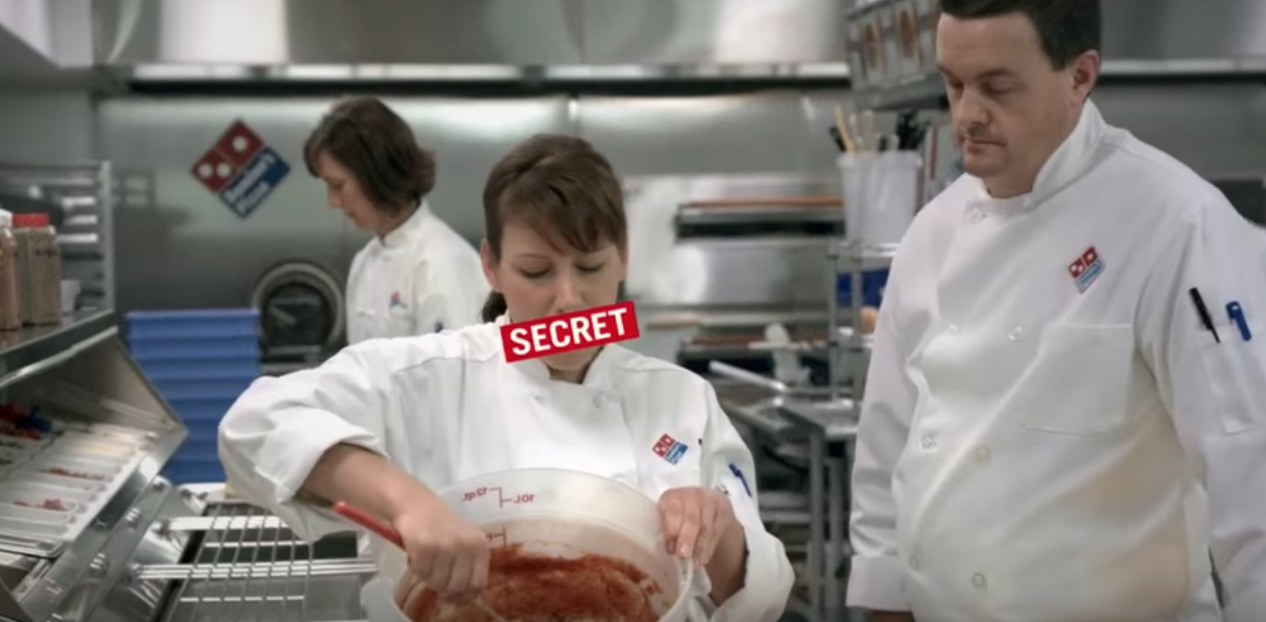
Roxanne Swamba, Lead Pizza Chef, explaining the recipe for Domino’s new pizza sauce, which had “40% more herbs.” [Source]
“Well, I can’t say there were not people who were concerned. Heck, I was concerned. It’s normal to have discomfort in making a big decision, but other than that, we had 1,000 percent alignment on doing this.” – Russell J. Weiner, former CMO
2012: While Domino’s was reinventing their pizza recipe, they were working on another big product development. In 2012 they introduced an entirely new style of pizza to their menu: pan pizza. They’d worked on the recipe for three years. Each pizza had to be hand-stretched. The new pizza aligned with Domino’s reinvigorated focus on putting more care and effort into their pizza.
Domino’s offered a lot of topping options for their original pizza, but this was the first time they’d released a new style of pizza. It might have been prompted by pressure from Pizza Hut, who already offered pan pizza. This was a successful chess move by Domino’s. The new pan pizza became a favorite with many customers and gained its own following.“Listen, I’m a New Yorker, I know pizza. But I will say that pan pizza showed up and I thought it was not awful. I actually sort of liked it. Now I have a craving for it. The bread dough is almost like a focaccia … it’s crispy and it’s oily and it’s pretty delicious.” – Jasmine Moy, Manhattan-based lawyer
The numbers showed the success of their big product changes, too. In the fourth quarter of 2012, Domino’s revenue was up 7.5% and net income was up 21.6% versus the prior-year period. The company had seen same-store sales growth domestically and internationally and reported better operating margins.
Domino’s pizza reinvention was an undeniable success. People loved the new pizza recipe and the new pizza styles. The public’s entire perception of the company changed. Before, ordering from Domino’s meant sacrificing taste in order to get something to eat as soon as possible. Now, ordering from Domino’s was a fast and fun way to get a pizza that was “pretty dang good.” Given that customers had been referring to their pizza as cardboard just a few years earlier, this was a 180-degree turnaround.
Another really important thing happened to Domino’s as a result of this recipe overhaul. The market realized that the company cared. Now they weren’t just another generic company in a lineup of delivery pizza brands—they were a tongue-in-cheek, creative company that went the extra mile to make customers happy. They had a personality and they had heart.
There were two really important factors that led to this change in perception: Domino’s embraced their crappy pizza, and they embraced digital channels to connect with their customers about it. The idea of “owning up” to how terrible their pizza was and atoning for the bad taste was central in all of their new marketing campaigns from this time. They won back customers’ trust. By leaning into the fact that their old pizza was really bad, Domino’s had new opportunities to be funny and creative. In one campaign, they created hyper-personalized ads that instructed specific individuals to try their new pizza.
Embracing digital channels to communicate with customers about the reinvention was also key. For example, Domino’s put a live, unfiltered Twitter feed of every conversation about their pizza on their homepage and called it the “Think Oven.” Digital platforms were another way to put their money where their mouth was and actually become more transparent and more accessible.In retrospect, Domino’s decision to reinvent their pizza seems obvious, but at the time, it was a huge risk. Bloomberg called it a “once-in-an-industry” move because Domino’s did something so hard that most companies never even think to do it: they admitted their core product was bad and publicly reinvented it. But this was the drastic strategy they needed to turn their company around. It was also pivotal because it paved the way for them to ramp up growth by shifting their focus to their other core value: delivery.
2012-Present: Engineering the future of pizza delivery
“What’s the easiest way to order? When you don’t have to do anything.” – Dennis Maloney, Chief Digital Officer
After their recipe reinvention, Domino’s started delivering pizza that people actually wanted to eat. Now they could turn their attention from product to distribution.
Delivery has always been central to the Domino’s Pizza business and brand. They’ve specified from their earliest days that they’re a pizza delivery company. This is how they’ve built convenience and reliability into their brand. They’ve been very self-aware about this and it’s been one of their huge strengths.
But one of their other huge strengths is the ability to adapt. They adapted their pizza to respond to customer criticism. Their next big move was to adapt their order and delivery services to adapt to the changing technology and UI landscape.
This isn’t a new concept for Domino’s. Throughout its history, Domino’s has always focused on optimizing order and delivery. What’s been different in recent years is how they’re innovating: they’re focusing more on leveraging the technology available to them in the fullest and most creative ways. It’s a good place to double down in order to grow because digital orders are more profitable and get a better product mix.
The focus on the newest technology, like self-driving cars, zero-click ordering, and drone delivery services serve three larger trends in how Domino’s is innovating the process of delivery. Their advances increasingly let the customer order from more devices, ask the customer to do less to place an order, and remove aspects of human interaction from ordering and delivery.
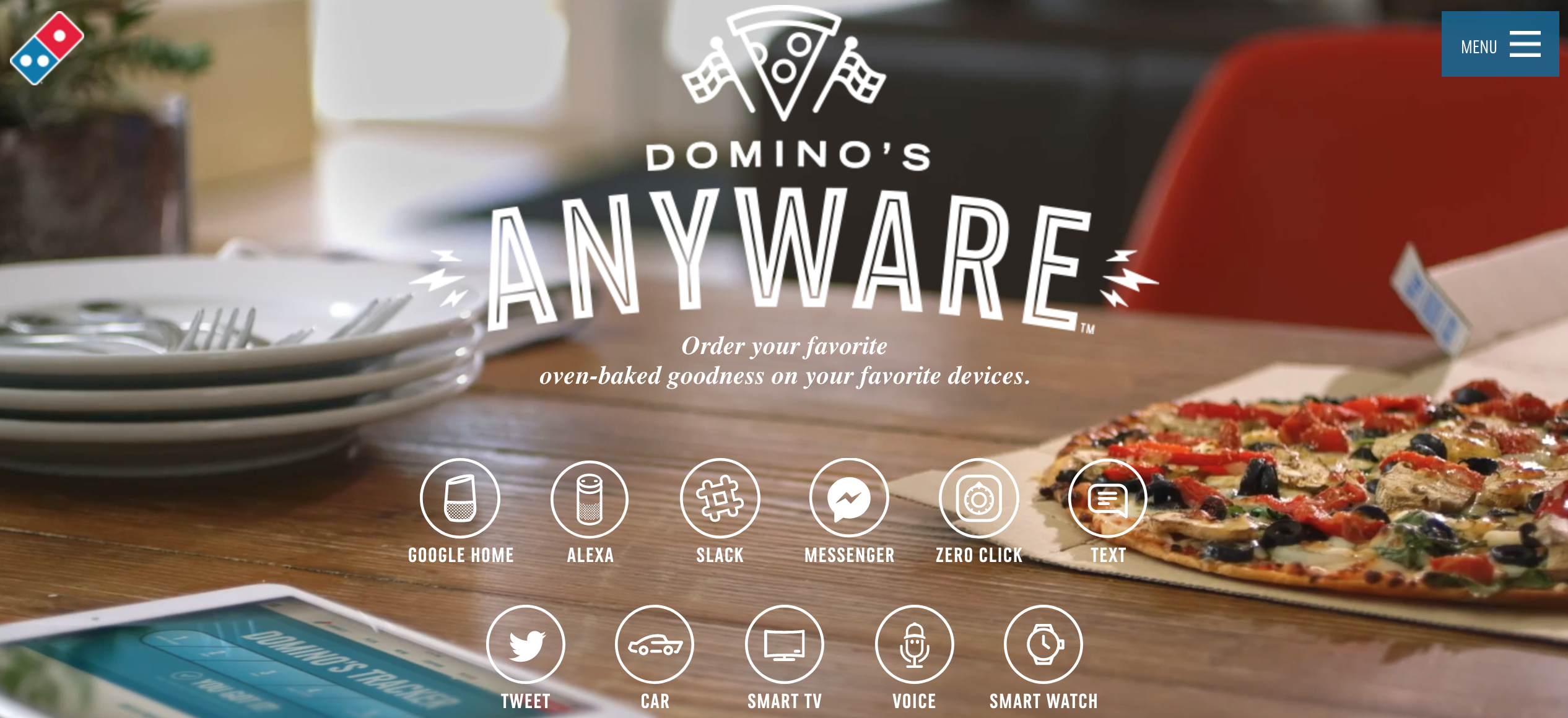
Today, Domino’s lists 11 different ways to order a pizza. [Source]
Let’s take a look at these most recent developments to understand how Domino’s is engineering the future of pizza delivery:
2014: Domino’s has always taken their ordering systems to the platforms they know customers are already using. So in 2014, it made sense for Domino’s to release an iPad app. The extra mile, though, that really showed how much they thought about the user experience was a 3D custom pizza building feature.
This was a completely new, innovative way to order a pizza. It gave customers a more realistic idea of what their final order would look like.Later that year, Domino’s also introduced Dom, a Siri-like voice assistant that helped people order pizzas. The experience of talking to the voice assistant simulates talking to a real person—for example, a customer can say “I’d like a large pepperoni pizza.” But the human interaction is automated and the experience becomes simpler and more scalable.
These improvements to the digital ordering experience were critical for Domino’s at this time because digital orders accounted for about 40% of the company’s U.S. sales. And Domino’s took these innovations and UX improvements very seriously by allocating the right resources to this work. By 2014, the largest department at the Domino’s headquarters was the IT department.
2015: Now Domino’s really leaned into their “Anywhere” campaign, which praised the convenience of being able to order a pizza from any place or any device. First, Domino’s was the first major restaurant chain to make ordering possible from smartwatches. This allowed customers to place orders from Pebble and Android Wear smartwatches and promised customers that they could “order pizza from [their] wrist in literally three clicks.”
The same year, Domino’s also launched their famous “tweet-to-order” system. This allowed users to order pizza by tweeting an emoji pizza to the Domino’s Twitter account. It was totally new, totally weird, and a little more complicated than it sounded off the bat—but the media and the market ate it up. Beyond just making it easier and more fun for people to place pizza orders, it turned Domino’s into a social media presence and made the brand even more accessible to people on the social platforms they were already using to talk to their friends.In 2015, online orders surpassed non-online orders, and over half of online orders came from mobile.
2016: For Domino’s, making ordering more convenient meant making it available in more places. But it also meant making the customer have to do less to place an order. The pinnacle of this development trend was their “zero-click” ordering with a new app. Domino’s would automatically place a pizza order ten seconds after the user launched the app.
One executive explained how the company imagined that customers would use the app: “If [customers] have their hands full at home with the kids, are on the run at work or commuting home they can simply say five words and their supreme or meatlovers pizza is on its way.”Zero-click ordering was unprecedented and maybe even a little unnecessary. But Domino’s used this new delivery method to drive home their specific brand of convenience. In the same vein, that year Domino’s introduced ordering via Apple TV and Amazon Echo. Their trajectory for innovation was all about imagining how ordering pizza could fit into customers’ lifestyles. As Chief Digital Officer Dennis Maloney put it, they’re “almost an e-commerce company that sells pizza.”
2017: Recently, Domino’s introduced another ordering platform: Facebook Messenger.
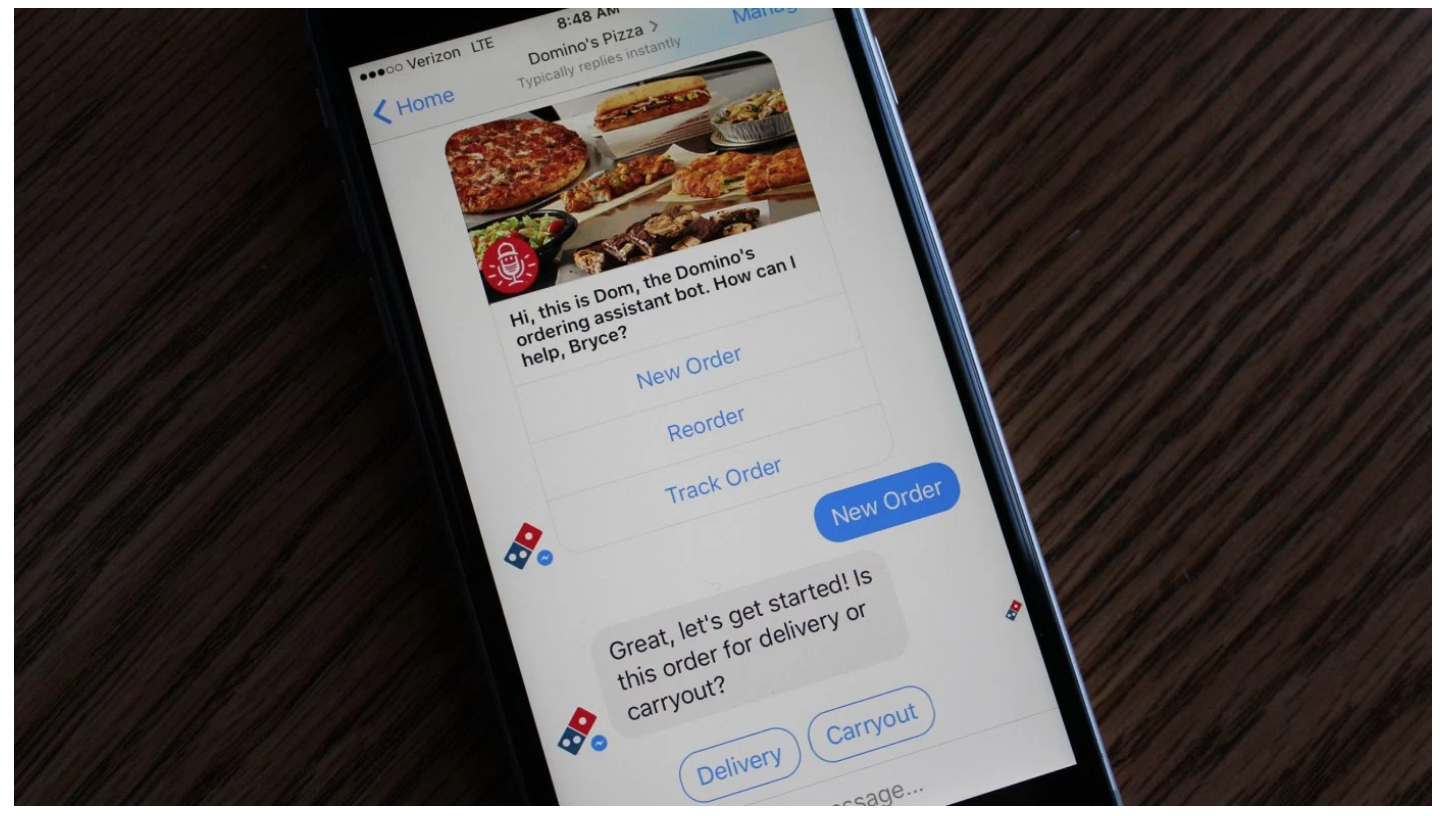
The idea was very similar to its other mobile ordering platforms but helped Domino’s get more digital real estate.
Other ideas cooking in 2017 were more radical. Domino’s also started testing self-driving pizza delivery vehicles in Ann Arbor, Michigan. They teamed up with Ford to create a car that drives itself to a customer’s house, has a built-in oven to keep the pizza warm, and features a key pad where users can type their code to unlock the door.
It’s another idea that seems bizarre at first and then brilliant. Self-driving cars are a hot topic in tech—and Domino’s figured out a way to use it to their advantage.It was such a good idea that other pizza delivery competitors are catching on. Earlier this year, Pizza Hut announced a partnership with Toyota on their self-driving delivery truck. But as with many other innovations in pizza delivery, Domino’s has the edge because they were there first.
This edge is showing in their numbers. They’ve recently pulled in front of both Pizza Hut and Papa John’s to become the biggest pizza chain in the world by global retail sales. They reported $12.2 billion in global sales and $277.9 million in profits for 2017. Domino’s also tracks same-store sales, which are sales from stores open at least one year, and have seen them rise for 24 consecutive quarters in the U.S. An analyst at Oppenheimer & Co. recently called this trajectory “incredible.”
The only way to achieve incredible results is by doing things differently.
“The standard playbook in the restaurant industry has been this constant flow of new products, most of which do not change your typical customers’ experience at all. [Innovations in technology] are not going to generate a fast return, but that’s part of how you stay ahead of the market.” – Patrick Doyle
Patrick Doyle knows that taking risks with weird things like voice-enabled ordering and tweet-to-order systems aren’t the ways that food companies typically innovate. But for Domino’s, it has always been about the customer experience and the long game. And instead of building a flash-in-the-pan business, they built an empire.
What’s next for Domino’s Pizza?
For Domino’s, reality is better than fiction. They’ve proven that they’re forward thinking in their approach to product, customer communication, marketing, and delivery. You can’t put anything past this company—they’re probably already working on your craziest idea.
It’s fun to imagine all of the possibilities of where Domino’s could take their pizza empire. Here are a few ways Domino’s could innovate in high-value spaces:
VR Pizza Construction: Domino’s blew up the food industry when it released a 3D pizza builder on its iPad app. At that time, in 2014, Apple was selling tens of millions of iPads and the market was obsessed with tablet interfaces. This was the best leverage of the then-current technology and market interest. Now, technology and interests are changing again. The public’s attention is shifting to VR, which could be another really successful platform for Domino’s to engage users in new ways. In the coming years, Domino’s could introduce a VR pizza building component into their ordering experience. To gamify the experience even more, they could even introduce aspects of VR pizza building competitions between friends. This would help them become even further integrated on social platforms. It might be a weird and risky move for Domino’s, but if they can pull it off, it would be another way for them to stand out and stay ahead of the industry.
Make pizza fly: Don’t put anything past them—drone delivery actually isn’t a totally new idea for Domino’s. In 2016, Domino’s made the first-ever drone pizza delivery to a couple in New Zealand.
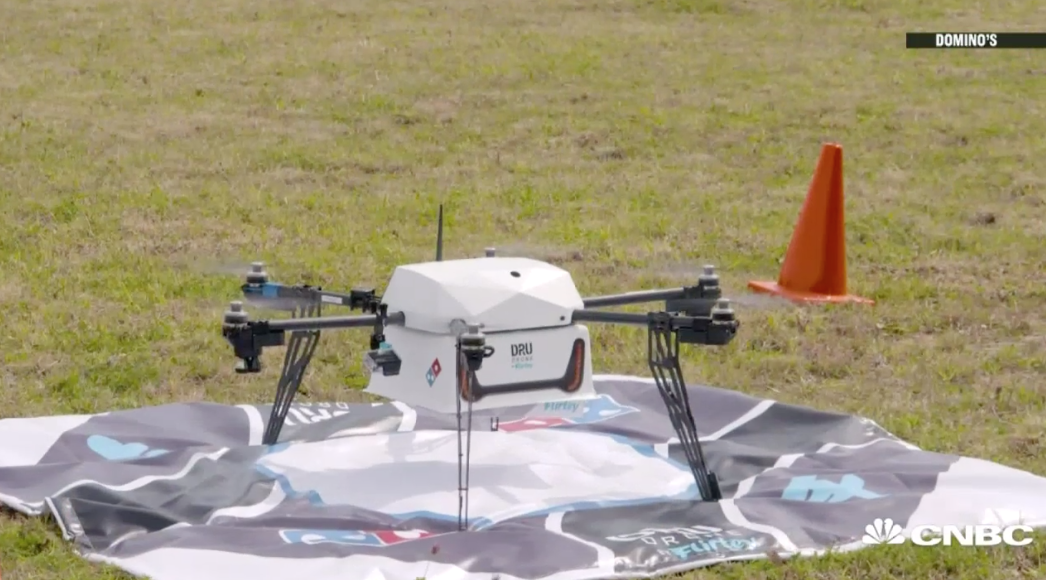
They’ve also experimented in 2013 with remote-controlled mini helicopter delivery in the UK. They called the device a DomiCopter.
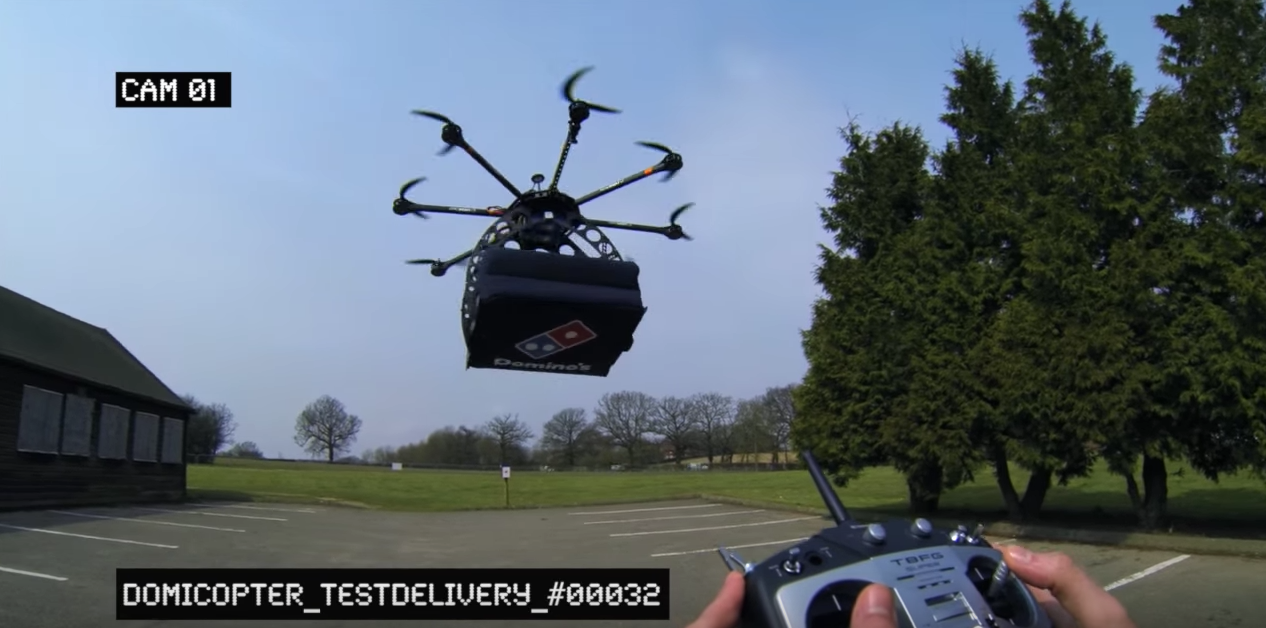
The prototypes are there, but Domino’s hasn’t launched device-driven delivery just yet. Though they’ve also been experimenting with self-driving cars, making pizza fly would be a game-changer. It’s a completely new way to deliver that doesn’t deal with the friction points around drivers, traffic, or considerable gas emissions. If Domino’s could scale up their drone delivery—potentially partnering with a company like Amazon that is making similar plans—they’ll have one of the most efficient and forward-thinking delivery systems in the world.
Marketing fueled by psychology: Right now, Domino’s marketing is all about convenience and speed. But there are a lot of opportunities for them to engage different audiences in marketing campaigns by pulling on other psychological triggers. For example, Pizza Hut created a program that has been running since 1984 to incentivize kids to read by giving them free pizza for reading a certain number of books. This kind of campaign not only builds positive brand associations and loyalty in a younger age demographic, it also appeals to parents who appreciate incentive programs in schools. Domino’s could create campaigns around other psychological triggers like quality (focusing on fresh ingredients and local partners) or nutrition (how to incorporate their better-for-you pizza into a healthy diet) to help build more positive brand associations that run deeper than convenience.
In the next few years, I think that we’ll continue to see Domino’s use the latest technology to their advantage and create thoughtful marketing that puts their core value to customers at the forefront of their brand image in ways that surprise us.
3 Key Lessons from Domino’s Pizza
Domino’s story of brand development, product failure, reinvention, and now technological innovation doesn’t have to be siloed just because they’re a pizza company. Domino’s has relied on key business fundamentals and good practices in order to grow and evolve their business. They’ve also pushed a lot of new ideas forward that can become new best practices not just for other food businesses, but for startups in any industry.
Here are three key takeaways from Domino’s unexpected trajectory:
Build organizational self-awareness
Domino’s knew their brand forward and backward. This helped them establish their brand, but it helped them focus and stay grounded through the many different phases of their growth.
Domino’s had clearly defined three important things: their core value proposition for customers (convenience), how their operation would grow logistically (franchising), and what their most important growth lever was (digital ordering). With these pillars in place, Domino’s was able to evolve and iterate even through rocky times.
Domino’s mentality about their company and their organizational self-awareness is a useful template to other companies. Try asking your team the following questions:
- What is your company’s core value proposition to customers? (These are the particular differentiating features of your product or service.)
- How will your company and business grow logistically? (How will you expand your internal teams to manage and facilitate increased business?)
- Where are you biggest opportunities for growth? (Where should you be focusing future growth efforts based on technology and market interests?)
Reaching clarity on these points will ensure that you have a strong foundation for growth, iteration, failure, and rebound.
Use technology to exemplify what you are and what you believe in
Twenty years ago, not many business leaders would have predicted that a pizza company would pivot to become a tech company. But that move is exactly what has given Domino’s an edge in a competitive market in the last few years.
Any big move like that has to be executed thoughtfully. Domino’s shift to focusing on tech innovation has been successful because they haven’t stepped outside of their wheelhouse. All of their innovations have been tightly related to their core value—pizza delivery—so these innovations have only made Domino’s more successful at what they’re already trying to do.
This is an important lesson for tech startups and companies in other industries, too. Today, every company is a tech company. It doesn’t matter if you’re in the tech industry—selling to businesses or consumers now requires you to use the right means of technology to engage them. Getting ahead means thinking of new ways to leverage technology, communication platforms, and distribution channels that others haven’t thought of yet.
Companies can examine their unique innovations in tech and make sure each is driving the company’s core mission forward. Does the use of this technology contribute towards growing the North Star metric?
Next, companies can flip the question on its head and consider whether there are new ways to use technology to exemplify who they are and what their mission is. What advantage does the technology lend that wasn’t possible before?
Thinking like this helps companies stay focused while finding new ways to grow.
Use negative feedback to inspire you, not crush you
It was really difficult for Domino’s to admit their pizza was terrible. But owning up to it helped them move forward. Patrick Doyle said, “You can either use negative comments to get you down, or you can use them to excite you and energize your process of making a better pizza. We did the latter.”
It’s hard to hear negative feedback, especially about something that’s core to your company. But with feedback, you always have a choice of how you respond to it. It’s important to use criticism to fuel improvement. The other option means becoming increasingly disconnected from your market.
It’s useful to set up a way to collect and digest negative feedback early on in your company so that you have the process built into your DNA. Try thinking about it in these three components:
- Collect: Solicit feedback from user surveys and record feedback given to customer service representatives
- Learn: Flag negative feedback and set up a meeting for review by top-level team members.
- React: Create a plan of action to act on negative feedback. This can be something as small as making a change to a customer’s account, or something as large as making a change to your core product.
Remember that every company has struggles and failures. Only the smart ones recognize them and take action.
Your drunk food delivery service is one of the fastest-growing tech businesses
Domino’s has always been the pizza that people order at 6pm when they’re hungry for dinner, at 8pm when they’re starting a movie, and at 2am when they want a late-night snack. They know that and they’ve never changed that. Now, they’ve just started to have more fun by reimagining what it means to be a pizza delivery company.
Domino’s has been on an ever-winding hero’s journey. Their recent turnaround and innovations have been prime examples of how startups should overcome obstacles and apply forward-thinking to their core value. I’m excited to see what’s next for the pizza giant.

